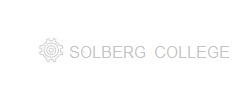Education In Uganda
The Ministry of Education and Sports
The mandate of the Ministry of Education and Sports (MoES) is to provide quality Education and sports services in the country, which are constitutional obligations for the Ugandan State and Government therefore, The Mission of the MoES is "to provide technical support, guide, coordinate, regulate and promote quality education, training and sports to all persons in Uganda for national integration, development and individual advancement." The Vision for MoES is "Quality and appropriate Education and Sports services, for all"
Education In Uganda
The system of education in Uganda has a structure of 7 years of primary education, 6 years of secondary education (divided into 4 years of lower secondary and 2 years of upper secondary school), and 3 to 5 years of post-secondary education. The government of Uganda recognizes education as a basic human right and continues to strive to provide free primary education to all children in the country, however, issues with funding, teacher training, rural populations, and inadequate facilities continue to hinder the progress of educational development in Uganda means that education systems aren't the best.
The present system of education, known as Universal Primary Education (UPE), has existed since 1997, and its introduction was the result of democratisation and open elections, as there was great popular support for free education.[2] Despite its promising boosts in enrolment, issues with funding and organisation have continued to plague the UPE.[2] In 1999 there were six million pupils receiving primary education, compared to only two million in 1986. Numbers received a boost in 1997 when free primary education was made available to four children per family. Only some of primary school graduates go on to take any form of secondary education. This is contingent upon their passing their Primary Leaving Examinations (PLE). Uganda is one of East Africa's developing countries, bordered by Tanzania, Rwanda, the Democratic Republic of the Congo, South Sudan, and Kenya. It occupies 236,040 square kilometres (91,140 sq mi) and has 26,404,543 people.[citation needed] According to CIA World Fact Book 2004, more than 80 percent of its population is rural and 35% of the people lives below poverty line (Ngaka 172). The United Nations characterised the current condition of Uganda with its unstable government and struggling people as "the world’s worst humanitarian crisis". (Moyi 6) In 1997 the Ugandan government introduced the Universal Primary Education (UPE) program to improve enrollment and attainment in primary schools. It was initially realized to provide free education for four children per family, but the program was not performing based in its regulations due to the complex structure of Ugandan families. Most Ugandan families have more than four children and households started sending every child, which resulted in a rapid increase in student enrollment in primary schools (Ngaka 172). Due to the circumstances, President Museveni announced that the UPE was open to all children of all families (Omona 74). When the new policy was executed, schools experienced a massive influx of pupils and the demand for learning materials, teachers, and infrastructure became a challenge to the education system (Ngaka 172). Ngaka argues that the UPE resulted in costly consequences, including but not limited to a poor quality education, low pupil achievement, untrained teachers, improper infrastructures and classroom settings (173). Uganda has seven years of primary education and the legal age for school entry is six (Moyi 3). According to the Ministry of Education and Sports (MoES) statistics, school enrollments increased from three million to 5.3 million in 1997 and the number rapidly increased to seven million by 2004 (Kakura 137). Even though the increased number of pupils was perceived as a good thing, there were only 125,883 teachers, exceeding the UPE required pupil-teacher ratio of 1:40 (Kakura 138). The large number of pupils worsens the learning environment and it becomes harder for the teacher to be heard and teach. According to Arbeiter and Hartley, classes have between 70 and 150 pupils and there is over-age studying in all schools. Moyi explains the issue of many classes having the inappropriate age of pupils as having been driven by late enrolment or grade repetition, which in turn is caused by the poor quality of education (8). For instance, “third grade included pupils aged between seven to sixteen years and in sixth grade there were pupils up to nineteen years of age” (Moyi 66).
Beautiful Quotes
Our partner
Take charge of your health today with our specially designed health packages










